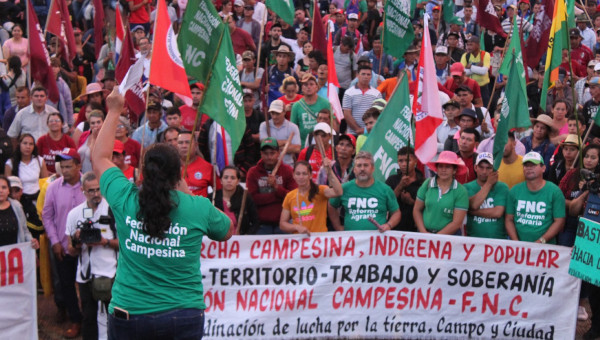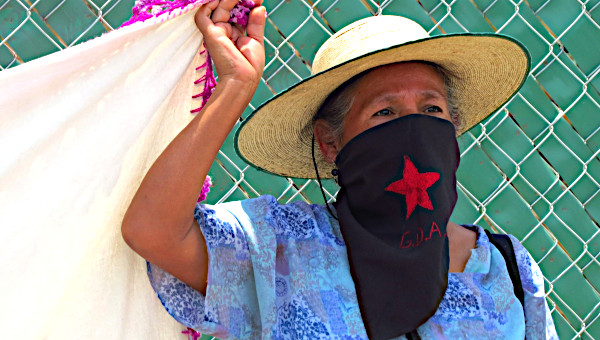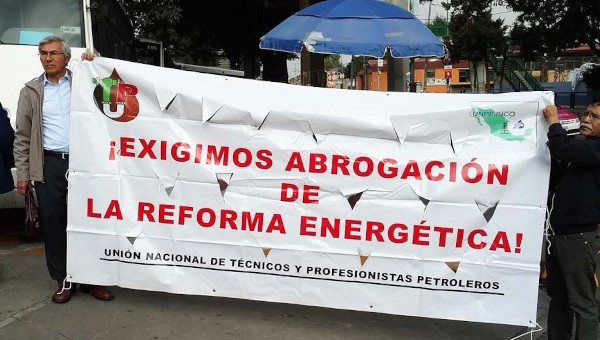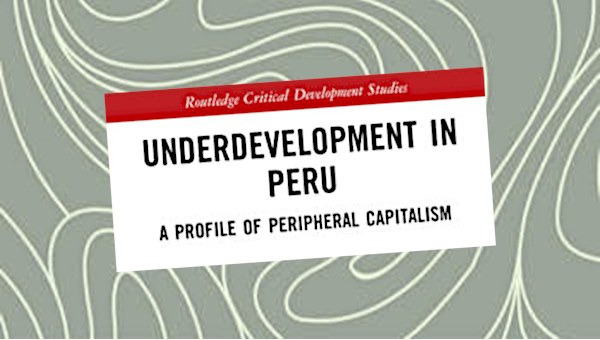Bolivia’s Elites Seek A Media Coup
Bolivia’s popular movements are attempting to use democracy and a legitimate government to advance an agenda of sovereignty, greater equality, and development. Their opponents, led by several governors of the wealthier provinces in a part of the country called the “media luna,” are trying to use violence and sabotage to stop that agenda by provoking a civil war and chaos. The challenge to Bolivia’s government and its president Evo Morales is to stop the violence without allowing the provocation to succeed. In meeting that challenge, Morales has the support of most of the Latin American governments. His opponents have the support of the United States government.
Both sides are using tested models. Bolivia’s path has similarities with that of Venezuela. After long debates about whether the electoral path to change was the right one, an electoral strategy was mapped out with some of the social movements supportive, others skeptical. Having won elections, the new government faced difficulties because much of the state apparatus, including regional governments, remained in the hands of the old elite and status quo, while the economy remained controlled by foreign powers and local elites. Trying to re-structure the government while keeping the country running, dealing with foreign interference, and then use legislation and a constitutional process to attempt deeper reforms, is a major challenge. But the government’s attempts at reform were strengthened and propelled by popular support and, more importantly, popular organization. Meanwhile the fact that Washington’s attention was focused on the Middle East provided some breathing space.
The opposition is also using tested models. In Venezuela in 2002 and in Haiti in 2004, U.S.-backed elite movements developed methods for enacting a coup against an elected regime. Western media would support the elite and present a distorted picture of the elected government and its leader as a “strongman” or “dictator.” These media reports could be translated and re-broadcast locally to present a popular government as if it were internationally isolated. The U.S. Embassy and other personnel could contribute to both the media campaign and to the financial, political, and military organization of the opposition. In the final stages, military or paramilitary forces would be necessary. They would create some spectacular instances of violence: perhaps by attacking unarmed opposition protestors whose deaths could be blamed on the government; alternatively, they could attack government supporters who confront the opposition in counter-demonstrations.
The latter might lead to armed action by government supporters in self-defense or in reprisal, or to repression by military forces still loyal to the government. In either case, further pretexts are provided for the government’s claimed perfidy and violence, which could then lead to calls from the U.S. that the government step down in a predictable press conference at the U.S. Embassy.
At this point in Bolivia, the international media campaign against the government is on in full force, the U.S. has helped to organize the opposition, and since September 10 the requisite massacres have been produced, by the opposition itself, its victims the government’s supporters. If the regional governments support the Bolivian government and the armed forces remain loyal, as they are likely to, the Bolivian government will survive this crisis. But lives have been lost senselessly in this attempt to stop Bolivians from claiming their rights.
Re-Founding The Country
Although the path to the current crisis has been longer than a few weeks (for some background see our previous “Bolivia on the Brink”, ZNet March/08), the trigger for the current violence was the announcement on August 28, 2008 by Evo Morales of a date for a referendum on the new constitution. It is to be held on December 7, 2008, and it will mean a re-founding of the country: land reform, nationalization of natural resources, and institutional changes that will make it much more difficult for the elite to block popular measures.
The elite’s main strategic goal is to avoid the constitutional referendum by pressuring the government to postpone the constitutional referendum. This would cost Evo his popular support and destroy any capacity or momentum for popular reform. The Morales government is extremely popular, and the elite knows it. Their strategy has been, rather than to claim that they are representative of the country as a whole, that they are seeking autonomy for their own regions, which are controlled through old networks of patronage (and, more recently, violence as well). In May 2008 they held their own autonomy plebiscites, organized by the five provincial governments under their control, with no international oversight and no legal basis. Morales’s government dismissed these as illegitimate and when a recall referendum was held on August 16, 2008 (this time with international observers and a legal basis), Morales won with 67% of the vote.
Two weeks later on August 28, Morales issued a presidential decree setting the December 7 date for the constitutional referendum. On September 2, the electoral court announced its opposition to the referendum on technical grounds (the court claimed the referendum couldn’t be announced by decree but had to be passed by Congress, including by the opposition-controlled Senate). The opposition governors of the five provinces demanded the referendum be called off. Opposition demonstrators began to block roads. They seized an airport in Cobija on September 5 and blocked the highway between Santa Cruz (an elite stronghold) and the capital, La Paz, followed by roads linking Bolivia to Brazil. They attempted to take over government offices and clashed with Bolivian armed forces – who had been ordered, and followed orders, to not respond to provocation.
In the first week, these opposition protests failed. They generated neither the desired reprisals nor hoped-for of popular support against the government, though they had caused economic damage. Opposition leaders, like wealthy governor Ruben Costas who met with U.S. ambassador Philip Goldberg, must have been concerned about their lack of success. So in the second week of protests, the opposition escalated and moved down the path of sabotage and murder. The road blocks had resulted in energy shortages in the opposition-controlled areas, but the seizure of a gas plant in Villamontes on September 8 and an attack on a pipeline to Brazil on September 10 made problems worse. On September 11, “clashes” in Cobija, Pando, killed about 11 people. The government began to use tear gas and pellets against protestors. Morales called for continued restraint, but warned that “patience has limits.”
On September 12, a paramilitary attack on a pro-government demonstration, just outside Cobija, killed 30 people, in what Bolivian government officials called a massacre. One of the survivors, Antonio Moreno, told the Associated Press that the peasant demonstrators were unarmed. Armed men fired on them from trucks with machine guns. Moreno’s account: “They insulted us, they shot at us, they were armed, others had sticks. We retreated 800 meters but someone said we had to face them. There was a fight, we disarmed some of them but we couldn’t take their weapons away.” The government blamed the governor of Pando, opposition leader Leopoldo Fernandez, for the violence and claimed paramilitary assassins hired by the opposition pulled the triggers. The opposition replied by claiming the peasants attacked first.
The victims of these killings were popular and indigenous movements and organizations, supporters of the government, in the opposition-controlled areas. These organizations helped bring out the popular vote for Evo in the recall referendum and have been targeted for revenge by the elite. Among the attacks in Pando province were the land reform institute, human rights NGOs supporting peasants, and the local indigenous confederation. Among the victims of the Pando massacre was Bernadino Racua, a well-known indigenous leader.
On September 13 and 14 Evo’s government declared a state of emergency in Pando. It used the military to take back the airport and the government offices that had been taken by the opposition. Orders for the arrest of Fernandez and others were issued. Patience had reached its limits, both with opposition violence and with U.S. interference: the U.S. ambassador was declared persona non grata and told to leave, denying the Embassy the chance to hold the usual press conference demanding negotiations, concessions, or a resignation. Chavez followed by expelling the U.S. ambassador to Venezuela, claiming another coup plot against him had been exposed, and Honduras refused to credential their incoming U.S. Ambassador.
The U.S. responded in kind, expelling the Venezuelan and Bolivian ambassadors, threatening “grave consequences,” and announcing sanctions against Venezuelan ministers on the usual drug war grounds (dispelling these drug war accusations requires another article and can’t be done here). Economic and political consequences will run in both directions if the economic relationships between the U.S. and Latin America are harmed. Evo had just visited the Middle East, including Iran, contrary to U.S. attempts at diplomatically isolating that country, and Venezuela just announced joint military exercises with Russia in November. Ecuador’s Rafael Correa announced concerns of separatist movements in the Bolivian mold taking action in Ecuador’s Guayaquil province.
Within Bolivia Evo has acted to try to deny the opposition a strategic victory and prevent the conflict from derailing the popular agenda. On September 9, in the middle of the crisis, he shuffled out some of the ministers he’d been forced to accept out of compromise with the elite and replaced them with people who were ready to move popular economic policies. He opened a dialogue with the opposition but insisted that the referendum would go forward on December 7. The opposition offered to lift the roadblocks on September 14. The government approved this step but said it was completely inadequate to restore order. After orchestrating the deaths of dozens of people, the opposition ought not to be allowed to simply order a temporary tactical retreat. They have the right to due process in criminal prosecutions. They do not, after orchestrating murder and massacre, have the right to demand concessions from a legitimate government.
Latin American leaders, including those of Venezuela, Colombia, Ecuador, Brazil, Argentina, Chile, and others, are meeting on September 15 to seek a resolution to Bolivia’s conflict. Virtually all, including even U.S. ally Colombia, have announced support for Morales’s government and its popular mandate, and that they will refuse to accept separatism.
The movements that brought Evo to power will not go quietly, as the opposition should know. Without the capacity for a national coup, the opposition lacks the popular support to even sow “ungovernability” in their own provinces for very long. Their desperate need is to use the media to amplify their limited actions as larger than they are, to generate external political pressure to force Evo to make concessions and defeat the popular movement for them. As a result, the success of Bolivia’s popular processes depends in part on whether the false stories about the government, the past few weeks, and the days to come, are believed. •





